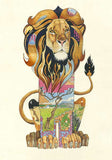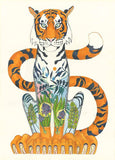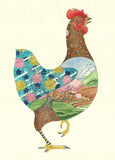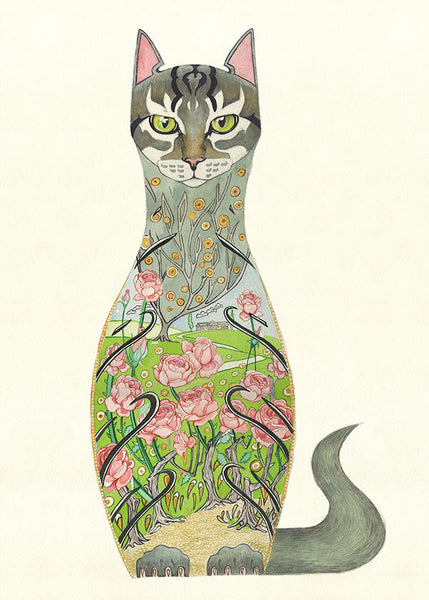Which animal best symbolises motherhood?
According to Polish myth, a mother cat was crying by the river as her kittens had fallen in and would drown. The reeds felt so sorry for her, they grew down to the water to allow her babies to climb out over them. After that day those reeds grow a velvety blooms as soft as kitten fur, called Pussy Willow. See the DM Cat Collection.

In fact, Mothers' Day celebrations date back to ancient Greece where Rhea, the mother of all gods, was honoured at a springtime feast. But the maternal image celebrated by the ancient Greeks was not a cuddly mummy tucking you into bed with a hot cocoa - no, Rhea is a fiercely protective mother flanked by lions.
 And fearless protection is exactly what Rhea's son Zeus needed as an infant. She hid her youngest baby to stop his father swallowing him, which is what he'd done with their other children to prevent them from overthrowing him (as he'd done with this father - familial relations were not harmonious to say the least!). Of course, when he grew up, overthrowing his father is exactly what Zeus did, but not before he'd made dad spit out his siblings. See the DM Collection Lion.
And fearless protection is exactly what Rhea's son Zeus needed as an infant. She hid her youngest baby to stop his father swallowing him, which is what he'd done with their other children to prevent them from overthrowing him (as he'd done with this father - familial relations were not harmonious to say the least!). Of course, when he grew up, overthrowing his father is exactly what Zeus did, but not before he'd made dad spit out his siblings. See the DM Collection Lion.
 Now-a-days, the protective, fearsome mother is described as a 'tiger mom' - unrelentingly strict matriarch demanding ever higher grades and achievement from her offspring. Few mums are really this extreme, but we all know there's a point beyond which you don't mess with your mum! See the DM Collection Tiger.
Now-a-days, the protective, fearsome mother is described as a 'tiger mom' - unrelentingly strict matriarch demanding ever higher grades and achievement from her offspring. Few mums are really this extreme, but we all know there's a point beyond which you don't mess with your mum! See the DM Collection Tiger.
 The mother hen is one of the most popular images of maternity - a large brood of fluffy chicks trailing after her. Folk tales about the red hen illustrate the value of hard work: the hen asks all the animals in the farm yard to help her gather grain for bread. None will assist her, until it comes to eating the bread. But then she says 'if any would not work, neither should he eat'. A true motherly moral if ever there was! And most mothers would agree, there's certainly hard work involved in bringing up all those little chicks. See the DM Collection Red Hen.
The mother hen is one of the most popular images of maternity - a large brood of fluffy chicks trailing after her. Folk tales about the red hen illustrate the value of hard work: the hen asks all the animals in the farm yard to help her gather grain for bread. None will assist her, until it comes to eating the bread. But then she says 'if any would not work, neither should he eat'. A true motherly moral if ever there was! And most mothers would agree, there's certainly hard work involved in bringing up all those little chicks. See the DM Collection Red Hen.
Whichever side of motherhood you celebrate, remember to say Happy Mothers' Day on 6th March.
Images © Daniel Mackie

